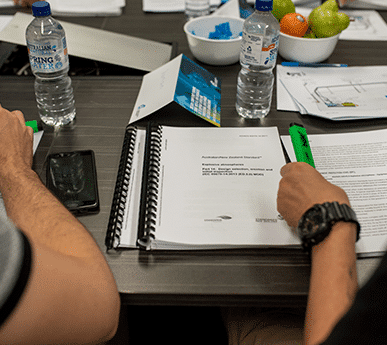An Unbiased View of Roar Solutions
An Unbiased View of Roar Solutions
Blog Article
The Only Guide to Roar Solutions
Table of ContentsTop Guidelines Of Roar SolutionsRoar Solutions Things To Know Before You Get ThisUnknown Facts About Roar Solutions
In order to safeguard setups from a prospective surge a method of evaluating and categorizing a possibly dangerous area is called for. The purpose of this is to make certain the proper choice and installation of tools to eventually stop a surge and to make certain security of life.
(https://sandbox.zenodo.org/records/174151)
No tools must be set up where the surface temperature of the equipment is above the ignition temperature of the offered threat. Below are some typical dirt unsafe and their minimal ignition temperature level. Coal Dust 380C 225C Polythene 420C (melts) Methyl Cellulose 420C 320C Starch 460C 435C Flour 490C 340C Sugar 490C 460C Grain Dirt 510C 300C Phenolic Material 530C > 450C Aluminium 590C > 450C PVC 700C > 450C Residue 810C 570C The chance of the risk being present in a concentration high sufficient to create an ignition will certainly differ from place to area.
In order to categorize this risk an installation is split into areas of danger depending upon the amount of time the unsafe exists. These areas are referred to as Areas. For gases and vapours and dirts and fibres there are three zones. Area 0 Area 20 A hazardous environment is extremely likely to be existing and might exist for lengthy periods of time (> 1000 hours each year) or perhaps constantly Area 1 Area 21 A harmful environment is feasible yet not likely to be present for long durations of time (> 10 450 C [842 F] A category of T6 implies the minimum ignition temperature level is > 85 C [185 F] Unsafe location electric equipment possibly designed for usage in greater ambient temperatures. This would certainly showed on the rating plate e.g. EExe II C T3 Ta + 60C( This implies at 60C ambient T3 will not be gone beyond) T1 T1, T2, T3, T4, T5, T6 T2 T2, T3, T4, T5, T6 T3 T3, T4, T5, T6 T4 T4, T5, T6 T5 T5, T6 T6 T6 A T Course score of T1 means the optimum surface temperature level generated by the instrument at 40 C is 450 C. Thinking the connected T Course and Temperature level ranking for the equipment are suitable for the location, you can always make use of an instrument with an extra rigid Department score than required for the location. There isn't a clear solution to this inquiry regrettably. It truly does depend upon the sort of tools and what repair work require to be accomplished. Devices with particular test treatments that can't be done in the field in order to achieve/maintain 3rd party score. Should return to the factory if it is prior to the tools's service. Field Fixing By Authorised Employee: Complex screening might not be required nevertheless particular treatments might require to be complied with in order for the equipment to keep its third celebration rating. Authorized workers need to be utilized to do the job correctly Fixing need to be a like for like replacement. New component need to be considered as a straight replacement requiring no special testing of the tools after the repair work is full. Each piece of tools with a harmful rating should be examined individually. These are outlined at a high degree listed below, but also for more comprehensive info, please refer straight to the guidelines.
The 5-Minute Rule for Roar Solutions
The devices register is a detailed data source of equipment records that includes a minimum set of areas to determine each item's location, technological parameters, Ex lover classification, age, and ecological data. The ratio of Detailed to Close examinations will certainly be determined by the Equipment Threat, which is examined based on ignition danger (the possibility of a source of ignition versus the chance of a combustible atmosphere )and the hazardous location classification
( Zone 0Area 1, or 2). Carrying out a robust Risk-Based Inspection( RBI )method is crucial for making certain conformity and safety and security in managing Electric Equipment in Hazardous Areas( EEHA).
The 7-Second Trick For Roar Solutions

In terms of explosive risk, a dangerous location is an atmosphere in which an eruptive atmosphere is existing (or might be expected to be existing) in quantities that call for unique preventative measures for the building and construction, setup and use tools. hazardous area course. In this post we explore the challenges encountered in the workplace, the risk control actions, and the needed competencies to function securely
It is a repercussion of modern life that we produce, store or handle a variety of gases or fluids that are considered combustible, and a variety of dusts that are considered combustible. These compounds can, in particular conditions, create explosive ambiences and these can have significant and terrible consequences. The majority of us are acquainted with the fire triangular remove any among the three elements and the fire can not happen, however what does this mean in the context of harmful locations? When breaking this down right into its most basic terms it is basically: a mix of a specific amount of launch or leakage of a certain compound or product, combining with ambient oxygen, and the visibility of a source of ignition.
In most instances, we can do little regarding the levels of oxygen in the air, however we can have considerable impact on sources of ignition, for example electrical devices. Harmful locations are recorded on the harmful area category illustration and are identified on-site by the triangular "EX-SPOUSE" indication. Right here, amongst other crucial info, zones are divided right into three types relying web link on the risk, the chance and duration that an eruptive environment will exist; Zone 0 or 20 is considered the most dangerous and Zone 2 or 22 is considered the least.
Report this page